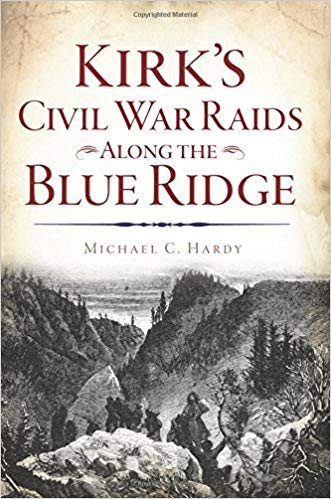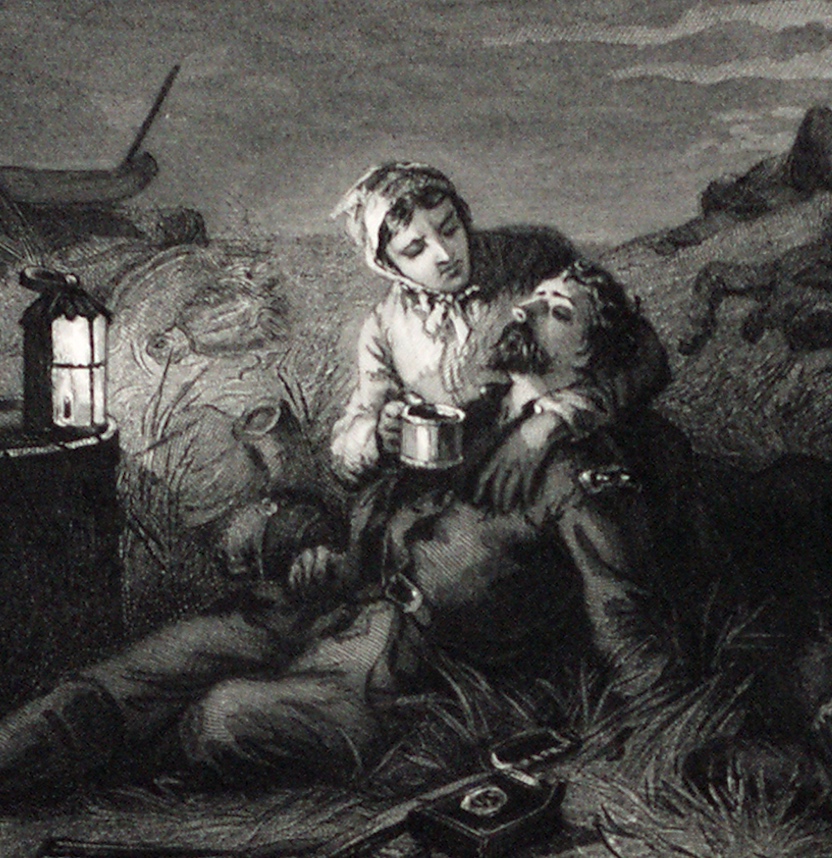Kirk’s Civil War Raids Along the Blue Ridge by Michael Hardy. The History Press, 2018. Paper, ISBN: 978-1625858467. $21.99.

Officially promoted to Colonel of the Third North Carolina Mounted Infantry (US) on March 14, 1865, George Washington Kirk led his men on a series of raids throughout the mountainous counties along the Tennessee-North Carolina line. Burning the Mars Hill college buildings, various barns, bridges and houses, and routing the hapless Home Guard companies, Kirk’s raiders hoped to finish off the last vestiges of Confederate resistance. Kirk, a Unionist from Greene County in Tennessee, had been fighting a war of raids and counter-raids for years. But now he was prepared to end it on his own terms.
The stories of George Kirk and his Unionist raiders along the Blue Ridge have been passed down through oral history in the region. Some elements of the southern Blue Ridge war have come under study before, like the Shelton Laurel Massacre, George Stoneman’s raid, the political-military careers of Zebulon and Robert Vance and the exploits of the Cherokee Thomas Legion. But Michael C. Hardy’s Kirk’s Civil War Raids Along the Blue Ridge is the first comprehensive study of George W. Kirk’s war within a war. The book addresses much more than the exploits of Kirk and his men. In fact, Kirk does not really show up until about half way through the narrative. But that is more a testament to Hardy’s deep contextual research of the guerrilla-style war in the mountains. George Kirk was as much a product of the mountain war as he was a protagonist.
Hardy lays out the complex politics of loyalty along the East Tennessee-Western North Carolina state line. As other scholars have pointed out (and Hardy summarizes helpfully), East Tennesseans tended to side with the Union more vigorously than did those in Western North Carolina. But there were key exceptions on both sides of the state line, including railroad-based Confederates in the valley of East Tennessee and Unionists in Western North Carolina’s most isolated, high elevation communities. Confederates controlled East Tennessee for the first half of the war, but abandoned Knoxville and the region in late 1863. After Confederate General James Longstreet failed to retake Knoxville in November of that year and dislodge Unionists in the ensuing winter, Longstreet returned to Virginia in late April 1864. The next major military operations in region occurred at the end of 1864 and beginning of 1865, when Union forces fought for control of the salt works in southwest Virginia. George Stoneman’s Union Cavalrymen made feverish effort to secure the mountainous communities near Asheville in the final weeks of the war.
In the backdrop of this conventional war was a raging guerrilla conflict that, at times, supported conventional forces and at other times followed its own course. Early in the war, Unionist guerrillas tried to sabotage the railroad of East Tennessee. When that failed, Unionists desperately sought escape to Kentucky. Confederate conscription drove many more men into the hands of Unionist guerrillas as they harassed Confederate civilians, towns and North Carolina Home Guards. Up to this point, George W. Kirk remained in the backdrop, largely unknown.
But after the Confederate forces abandoned East Tennessee in early 1864, Kirk became emboldened. With Confederate guerrillas (including the mostly Cherokee Thomas Legion) now attacking Union-held farms and towns, Unionists like Kirk launched a counterinsurgency campaign deep in Western North Carolina. In June 1864, he raided Camp Vance, a conscript camp near Morganton, and destroyed much property along the way. This action effectively pushed the border war eastward from Tennessee into North Carolina for the first time. From that point onward, Kirk and his motley band of hard-core Unionists, Confederate deserters and opportunists freed Unionist prisoners, wrecked Confederate infrastructure, seized property of Confederate civilians, and retaliated for real and perceived Confederate guerrilla assaults on Unionists. At times his raiders were brutal and ruthless, at other times showing capricious acts of mercy. The raids solidified Kirk’s reputation as the most feared of all Unionist raiders, though he was far from alone. Kirk remained active in the Reconstruction era, assisting Governor William Holden in his war against the Ku Klux Klan.
As is true with all History Press publications, Kirk’s Civil War Raids Along the Blue Ridge includes numerous photographs, maps and lithographs to accompany the text. Especially helpful is a final chapter titled “Looking for Kirk’s War,” which offers a guide for travelers to explore historic sites and markers. An appendix on African American contributions to the border war is also welcome, especially as historians have begun to recover and detail the experiences of the First US Colored Heavy Artillery Regiment stationed in the mountains.
In all, Michael Hardy offers a well-researched, rigorous study that is accessible to a wide range of readers. General readers of the Civil War may find the complex twists and turns of Appalachia’s inner war difficult to follow. But Hardy brings the characters and events to life and deftly weaves them into the broader regional context. Kirk’s Civil War Raids Along the Blue Ridge is essential reading for anybody interested in the Civil War in Southern Appalachia.
Aaron Astor is Associate Professor of History at Maryville College in Maryville, Tennessee. He is the author of Rebels on the Border: Civil War, Emancipation, and the Reconsruction of Kentucky and Missouri (2012) and The Civil War Along Tennessee’s Cumberland Plateau (2015).
